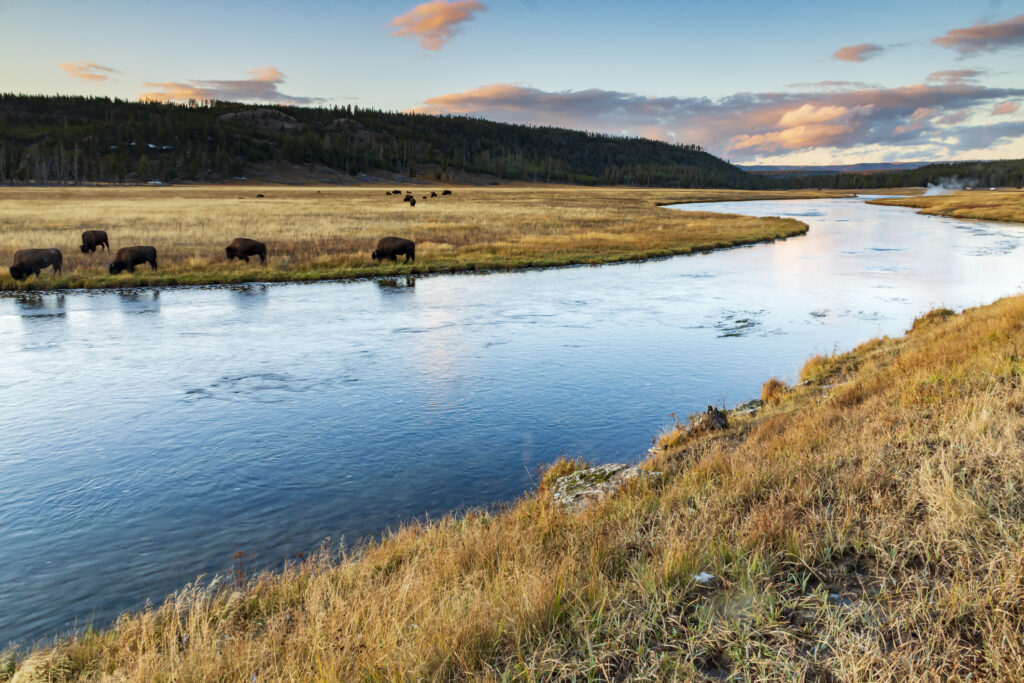Beneath the Surface: The Fish of Yellowstone
While Yellowstone National Park is famous for its geysers and wildlife, there’s a fascinating underwater world waiting to be explored. Beneath the surface of Yellowstone’s lakes and rivers, a diverse community of fish thrives, including the iconic Yellowstone Cutthroat Trout. There are 11 native and 5 non–native species in Yellowstone. Native species include Arctic Grayling, Cutthroat Trout (Yellowstone and Westslope), Mountain Whitefish, Longnose Dace, Speckled Dace, Redside Shiner, Utah Chub, Longnose Sucker, Mountain Sucker, Utah Sucker, and Mottled Sculpin. The five non–native species are mainly trout: Brook Trout, Brown Trout, Lake Trout, Lake Chub, and Rainbow Trout. Many rivers and lakes in Yellowstone (40%) did not have fish when the park was established in 1872. Stocking of both native and non-native fish species until the 1950’s led to competition for food and habitat, hybridization, and even nonnative fish preying on native fish. Restrictions in fish harvest allowed native trout to somewhat recover by the 1980’s. Since 2001, anglers have been required to release all native fish they catch in Yellowstone waters.
Yellowstone National Park has a Native Trout Conservation Area, where “fishing regulations are structured so that recreational anglers help selectively remove non–native species from the area without damaging the native fishery. In some areas, angler harvest will help to save the native fish and the natural ecosystems they support.” (National Park Service)
Yellowstone Cutthroat Trout
Cutthroat Trout are the most widespread trout species in Yellowstone and are an important food source for many bird and mammals species, including osprey, river otters and grizzly bears. Yellowstone Cutthroat Trout (YCT) can live up to 11 years, and are ready to spawn at 3 years old (Orvis). YCT spawn between late April through mid July, and have four life-history patterns. According to the NPS, “some populations live and spawn within a single stream or river (fluvial), some live in a stream and move into a tributary to spawn (fluvial-adfluvial), some live in a lake and spawn in a tributary (lacustrine-adfluvial), and still others live in a lake and spawn in an outlet stream (allacustrine). Life history diversity within an ecosystem helps protect a population from being lost in a single extreme natural event.” (National Park Service)
During the spawning season, YCT made ‘redds’ or spawning nests in the gravel at the bottom of streams or lakes. Here, eggs are deposited and fertilized. After incubating as embryos in the gravel for several weeks, fry emerge! Fry hatch timing depends on water temperature, usually in late summer and early fall.
What do fish do in the winter?
As winter approaches, Yellowstone’s fish face the challenges of cold temperatures and icy waters. To survive, they adjust their behavior and metabolism. As water temperatures drop, fish become less active. Their metabolism slows down to conserve energy, leading to more sluggish behavior and reduced appetite. Trout may shift their diet towards drifting insects, with fewer stream invertebrates available as a food source in the winter. Slower digestion in colder temperatures means that food lasts longer, but also limits growth.
To find more stable conditions, trout often move to areas beneath stationary ice or into deeper, slower-moving waters. Areas with ice floes or patchy snow cover can experience more temperature fluctuations and ice formation, making them less desirable habitats. Fish can seek refuge in side channels and backwaters to avoid surface ice and ice dams. Additionally, they can protect themselves from predators by finding areas with woody debris, pools, streambank root structures, and submerged vegetation (Ausable Freshwater Center).
Whether you’re a seasoned angler or simply a nature enthusiast, learning about the underwater world of Yellowstone National Park can be an exciting part of your next adventure in the park. Join Wildlife Expeditions on a guided tour and discover the secrets of wildlife winter survival strategies, learn about their unique adaptations, and gain a deeper appreciation for the delicate balance of the Greater Yellowstone Ecosystem.
Sources:
https://www.nps.gov/yell/learn/upload/8_RI_2024_Wildlife.pdf
https://www.nps.gov/yell/learn/nature/fish-ecology.htm
https://www.upperyellowstone.org/redds
https://fieldguide.mt.gov/speciesDetail.aspx?elcode=AFCHA02087


